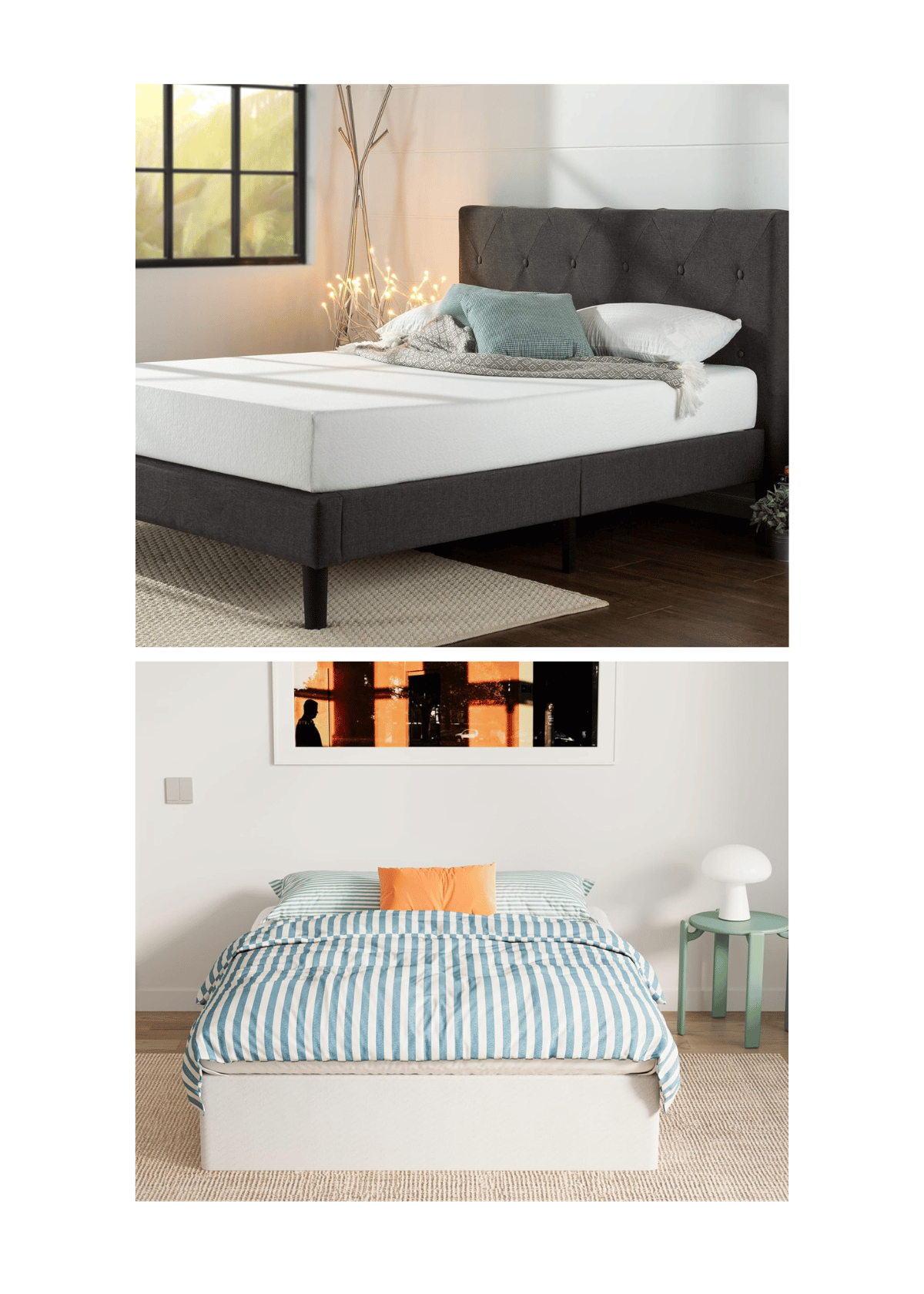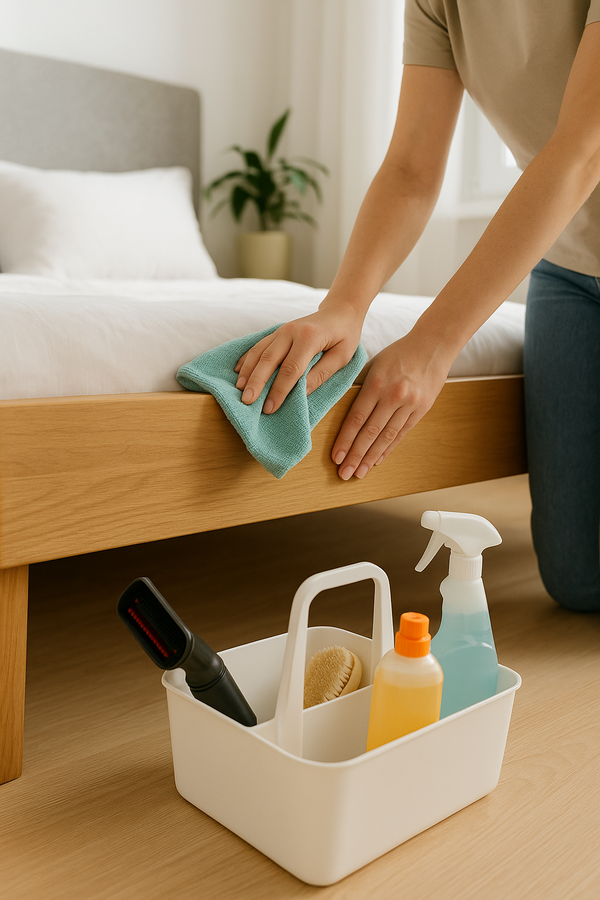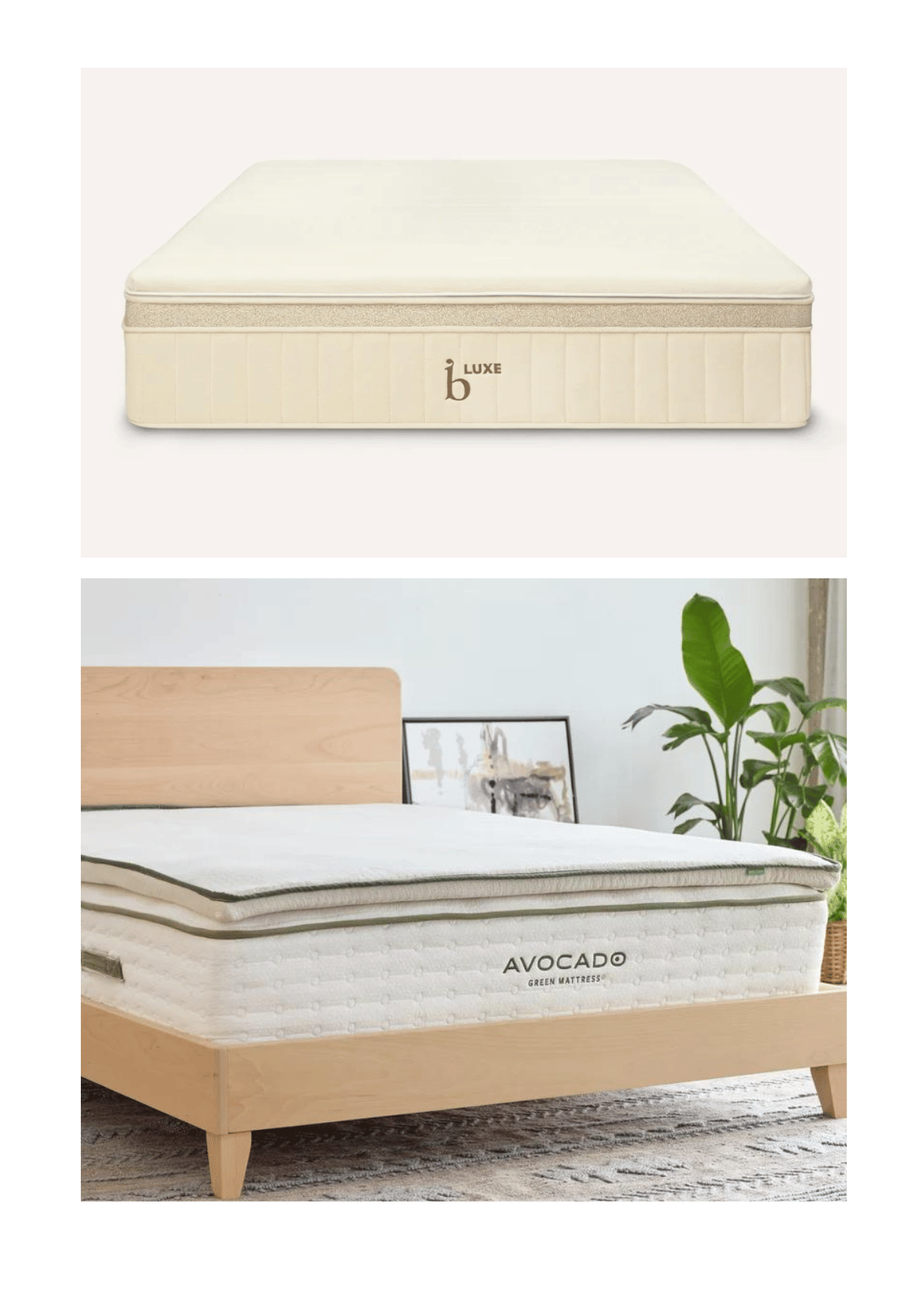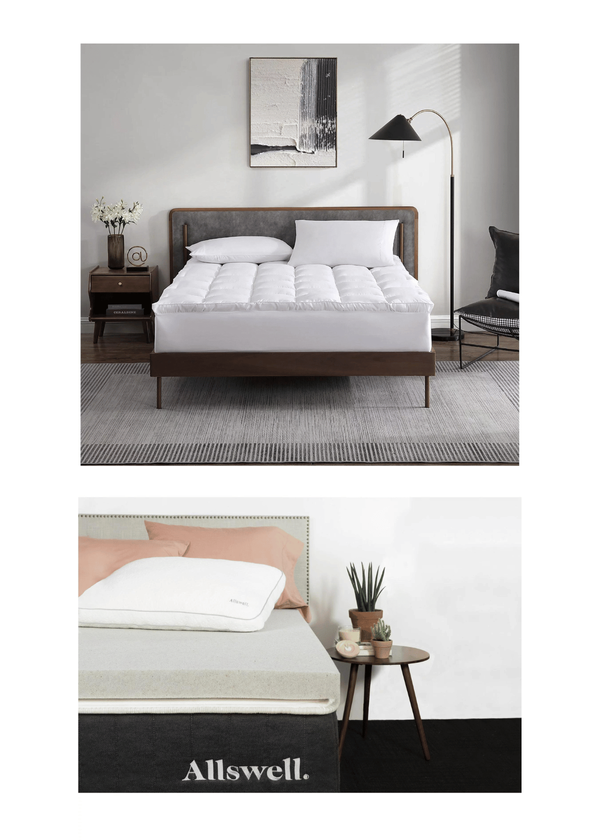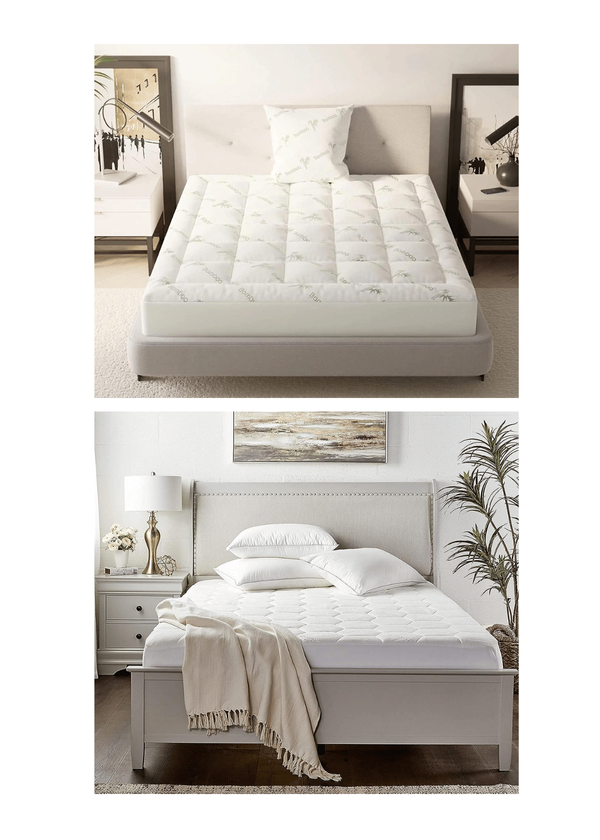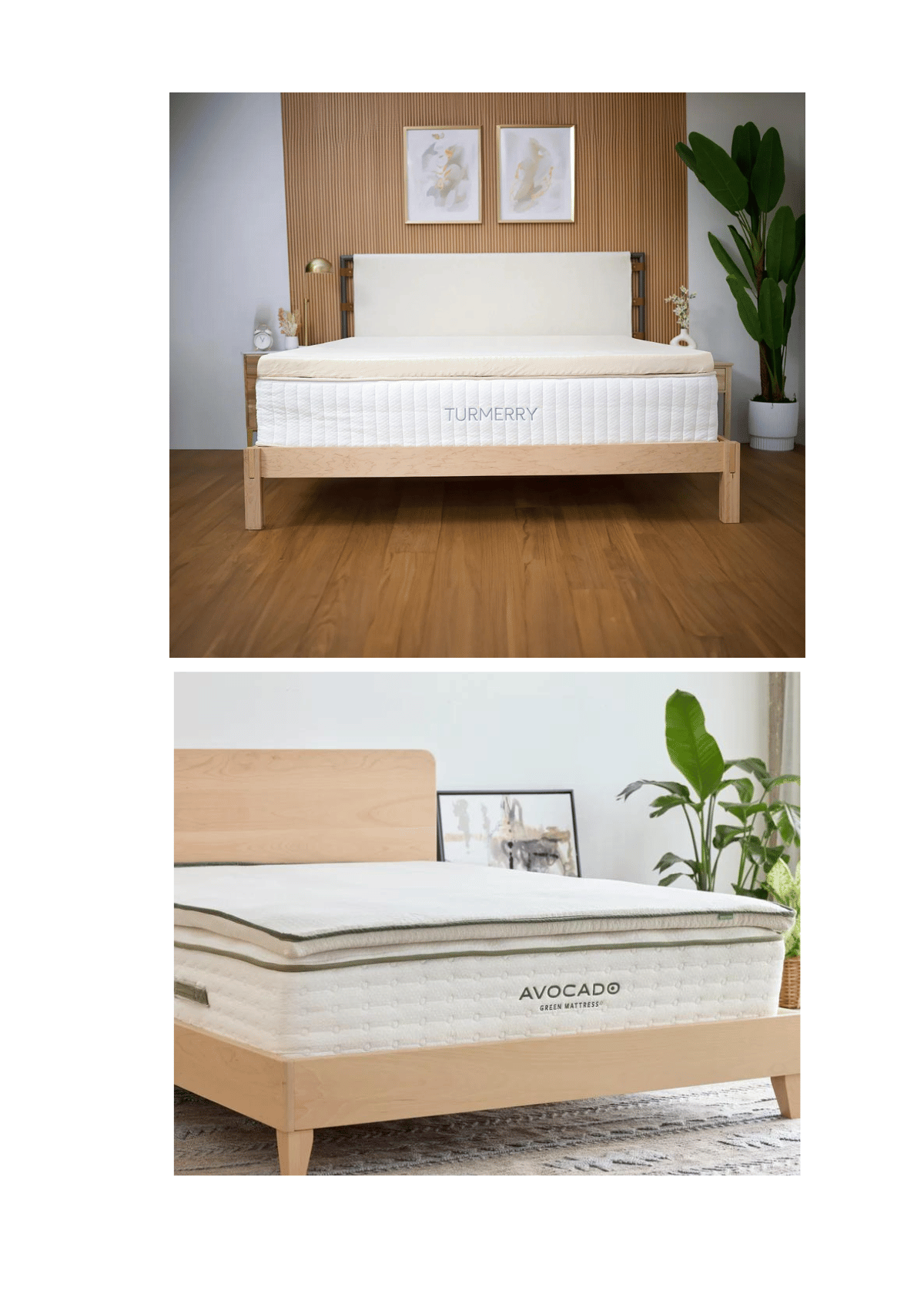(Last Update: 11/15/2025)
Have you ever woken up feeling more tired than when you went to bed or with sneezing and itchiness you can't explain?
In this blog post, I’ll help you uncover the hidden culprit: your current mattress. Mattresses can harbor allergens and irritants that compromise your sleep and overall health.
Imagine a world where every night is a refreshing escape, free from allergies and irritations, leading to rejuvenated mornings.
Dive deep with me as I unpack the hidden world of mattress health concerns and arm you with the best tips to safeguard your well-being.
Welcome to a journey towards a good night's sleep and better health!
Understanding Mattress Allergens

Allergens in mattresses often come from hidden culprits like dead skin cells, dust mite droppings, and flame retardant chemicals. These can accumulate and become a breeding ground for tiny creatures that trigger sleep disorders or asthma symptoms.
A poor-quality or uncomfortable mattress can lead to significant aches and pains, especially in the lower back.
Sleep deprivation caused by tossing has long-term effects on overall health. For adequate support, consider materials like natural latex instead of synthetic latex or polyurethane foam.
WHAT ARE MATTRESS ALLERGENS?
Mattress allergens include both organic and synthetic irritants, such as dust mites, mold spores, and chemical flame retardants.
These substances often provoke respiratory problems, skin irritation, or even mental health issues when exposure is prolonged.
A certified sleep science coach would emphasize choosing the right mattress to avoid allergies and irritations.
While most modern mattresses offer improved comfort design, some individuals might still find foam mattresses a source of allergens or chemical irritants. Bad innerspring mattresses can harbor bed bugs.
Latex mattresses, often touted as made of natural materials, can be healthier for those with allergies. However, an unsupportive mattress can disrupt restorative sleep regardless of the type.

COMMON SOURCES OF ALLERGENS IN MATTRESSES
Allergen buildup results from factors like worn out mattresses, chemical off-gassing, and poor hygiene. Materials that don’t resist dust mite allergies or have toxic chemicals can negatively impact your sleep and cause adverse effects on health.
DUST MITES: These minuscule creatures thrive in the warmth and humidity of our beds, predominantly feeding on the dead cells we shed. Their fecal matter and carcass fragments are potent allergens.
MOLD AND MILDEW: In mattresses with insufficient ventilation or those exposed to dampness, mold, and mildew or a tightly woven fabric can burgeon
PET DANDER: If individuals let their pets share their beds, the tiny skin flakes or 'dander' from these animals can be embedded in a high-quality mattress.
BODILY FLUIDS: Bodily fluids pose a higher risk for mattress-related allergy concerns: Sweat, urine, and other fluids can penetrate the mattress.
Regular cleaning with hot water and using a healthier mattress protector can help mitigate these risks and promote a healthier sleep environment. A bad mattress or mattress toppers may accumulate allergens.
If you struggle with sleep disruptions, our expert guide to the top mattress recommendations for sleep disorders offers targeted solutions to support better rest.
DUST MITES: TINY TROUBLEMAKERS BEHIND POOR SLEEP
These tiny creatures thrive on dead skin, warmth, and moisture. A comfortable position for humans is often a perfect mattress for mites to multiply.
The biology of dust mites:
Dust mites are tiny arachnids, cousins to spiders and ticks. Measuring about 0.2-0.3 millimeters, they predominantly infest older mattresses, often lurking in the neglected guest room bed.
Though they have a short lifespan—up to three months and reproduce rapidly, they can cause poor sleep quality. A female dust mite can lay up to 100 eggs in her lifetime. Their primary diet consists of organic detritus.
Why they are a concern in a mattress:
Prolonged exposure to dust mites and allergens in old mattresses can weaken the immune system.
They provide dust mites with food (our shed skin) and an ideal environment. The warmth and moisture we produce while sleeping offer them perfect breeding conditions.
Feeding, growing, and reproducing, they leave fecal pellets and body fragments behind.
Relying on a poor-quality mattress can intensify aches and pains.
Before making a purchase, it’s wise to review the mattress certifications that matter for your health to avoid VOCs and toxic materials.
Chemicals and Irritations
Some mattresses are treated with chemical flame retardants, fiberglass, or carcinogen-laced foams. Prolonged exposure may lead to chronic health issues, sore throats, or skin irritations.
The role of chemicals in a mattress:
Chemicals are commonly used for various purposes. Chemicals flame retardants are added to meet fire safety standards, while synthetic materials like memory foam can contain polyurethane and other agents.
Adhesives, dyes, and anti-microbial treatments might also introduce chemicals into the new mattress composition.
Polyurethane foam can also cause excessive heat retention. High levels in mattresses can have negative health effects and potentially irritate some individuals.
Potential health concerns:
Over time, a mattress can release, or "off-gas," volatile organic compounds into the air.
While many VOCs have minimal impact, some can lead to skin, eye, and respiratory irritations. Prolonged exposure may exacerbate allergies or asthma.
You can reduce allergy flare-ups by creating the perfect sleep environment with mattresses and pillows that resist dust and moisture buildup.
Obvious Signs and Symptoms of Mattress Allergies
Symptoms include soreness, coughing, itching, or even insomnia. If your mattress shows visible sagging, indentations, or causes strain, it may be the blame for your allergic reactions. The mood and mental well-being of sleepers are also affected.
RECOGNIZING COMMON SYMPTOMS:
Allergic reactions to bad mattress allergens can manifest in various ways. Common symptoms include:
- RESPIRATORY ISSUES: Sneezing, coughing, wheezing, and a runny or stuffy nose can result from inhaling allergens like dust, mite feces, or mold spores.
- SKIN REACTIONS: Red, itchy rashes or eczema flare-ups might indicate an allergic reaction.
EYE IRRITATION AND QUALITY SLEEP DISRUPTION: Bad mattress allergens can directly cause red, watery, or itchy eyes.
WHEN TO SEEK MEDICAL ATTENTION:
- Consult a healthcare professional if symptoms persist or worsen despite cleaning or changing your bedding.
- As mattresses age, they might disrupt sleep habits. Investing in a high-quality bed is essential to combating these symptoms and ensuring restful nights.
A healthier night’s sleep begins by learning how mattresses impact sleep quality and health through firmness, breathability, and chemical exposure.

Natural vs. Synthetic Mattresses
Natural materials like organic latex or cotton offer fewer toxins and low chemical emissions. In contrast, synthetic options may include plastic, coils, or layers infused with flame retardants. Check for GOTS or GOLS (global organic latex standard) certifications for safer choices.
A comfortable mattress that can provide adequate support helps reduce pressure points.
Natural Mattresses:
PROS:
- ECO-FRIENDLY: Natural beds have a smaller environmental footprint. They are often made from organic cotton, wool, or latex.
- FEWER CHEMICALS: Typically, they contain fewer chemicals.
- HYPOALLERGENIC PROPERTIES: Materials like wool naturally repel dust mites.
CONS:
- PRICE: A natural mattress tends to be more expensive due to the cost of organic materials.
Synthetic Mattress:
PROS:
- COST-EFFECTIVE: Generally more affordable.
- DURABILITY: Often have a longer lifespan, with materials like memory foam retaining their shape for years.
CONS:
- CHEMICALS can contain various chemicals.
- HEAT RETENTION: Some synthetic materials trap heat.
How they affect allergies and irritations:
- A natural mattress often offers a hypoallergenic sleeping environment.
- At the same time, durable and cost-effective synthetic beds may introduce chemicals that can irritate sensitive individuals.
Best Practices for Mattress Hygiene

Most irritants build up slowly over time, not overnight. Following a regular cleaning cadence—weekly, monthly, and quarterly—dramatically reduces dust mites, mold spores, pet dander, and bacteria that trigger sleep-related allergies.
Clean regularly to rid your bed of allergen buildup, dead skin cells, and dust. Use a vacuum with a HEPA filter, avoid cheap materials, and upgrade your mattress when needed. Mattress hygiene supports better sleep style and feeling refreshed.
Regular Cleaning Routines:
- VACUUMING: Vacuum the mattress using the upholstery attachment at least once a month. This helps remove dust, dead cells, and dust mites.
- SPOT CLEANING: Whether it is your own mattress or crib mattresses, for accidental spills or stains, use a mild detergent and warm water to clean the area. Avoid saturating the new mattres.
- TURN AND ROTATE: Rotate the mattress 180 degrees every 3-6 months and flip it if it's double-sided. This ensures even wear and prolongs the mattress's life.
In their article, “Healthy Sleep Starts Before You Hit the Sheets,” the National Sleep Foundation emphasizes the importance of our sleep environment: You should “Improve how you sleep with small changes to your evening routine.”
A supportive mattress helps maintain proper spinal alignment, promoting healthy posture,.
The Importance of a Mattress Protector
A protector can help control moisture, resist dust mites, and block toxic chemicals from reaching your skin. Look for those made without fiberglass or harmful additives.
BENEFITS OF USING PROTECTORS
- ALLERGEN BARRIERS: Protectors prevent pet skin particles and other allergens from infiltrating the mattress.
- SPILL AND STAIN PREVENTION: Accidental spills or sweat can lead to mold growth or staining. Protectors repel liquids, safeguarding the mattress's integrity and longevity.
- EXTENDED MATTRESS LIFE: Protectors can extend a mattress’s lifespan by keeping it clean and free of contaminants.
- EASE OF CLEANING: Washing a removable protector is simpler than cleaning a mattress.
Steam vs Vacuum vs UV Light:

How Each Method Performs
Steam cleaning reaches deeper into memory foam and polyurethane foam than standard vacuuming, making it more effective for foam mattresses and even a mattress topper.
Most mattresses today—especially conventional mattresses made by large mattress manufacturers—contain flame retardants and other chemicals, including methylene chloride, which can contribute to skin irritation and respiratory irritation over time if not properly cleaned.
Why Steam Wins Long-Term
UV light helps neutralize dust mites and microorganisms, but it cannot remove residue or buildup inside adult mattresses.
Waterproof covers can help prevent contamination, but taking care of your mattress still requires choosing the right cleaning method for your unique needs.
Steam is recommended if you want to avoid mattresses retaining allergens and trapped fumes.
Airflow and Ventilation
A well-ventilated bedroom is paramount for the comfort and health of bedding materials.
THE ROLE OF A WELL-VENTILATED BEDROOM:
Adequate airflow reduces humidity, minimizing the risk of mold and mildew forming in the bedroom, especially on a new mattress or a pillow.
TIPS TO IMPROVE AIRFLOW:
- REGULARLY OPEN WINDOWS: A few minutes daily can introduce fresh air and help circulate indoor air.
- CEILING OR STANDALONE FANS can improve air circulation.
- POSITION FURNITURE THOUGHTFULLY: Ensure large furniture pieces aren't obstructing vents or air paths.
- AIR PURIFIERS can help remove airborne contaminants.
For pressure relief and allergen reduction, explore the best mattresses for sciatica and back pain that prioritize clean materials and proper support.
Replacing an Old Mattress
If your bed is over 8 years old or causes neck pain, strain, or worsens sleep position, it’s time to replace it. Newer models with organic materials reduce chemical exposure and improve spinal alignment and durability.
Some mattress manufacturers still use fire retardant chemicals linked to endocrine disruption. Look for brands that disclose their materials and prioritize natural or certified organic alternatives.
The best option for allergy sufferers is a hypoallergenic mattress with dust mite-resistant covers and low-emission certifications.
Sleep better on a non-toxic, eco-friendly surface like the Birch mattress made from natural materials, perfect for allergy-sensitive sleepers.
WHEN AND WHY TO CONSIDER REPLACING
- LIFESPAN: Most mattresses last 7-10 years. After this period, the materials break down.
- VISIBLE WEAR: Indications like sagging, lumps, or protruding springs signal it's time to change.
- ALLERGIES: The mattress might be overburdened with allergens if you experience increased allergy symptoms despite regular cleaning.
- DISCOMFORT: Waking up with aches and pains frequently can indicate that the mattress isn't providing the needed support.
CHOOSING A HIGH-ALLERGENIC REPLACEMENT
MATERIAL MATTER: Organic materials like organic cotton, natural latex, and wool inherently repel allergens.
CERTIFICATIONS: Look for certifications like CertiPUR-US or Greenguard Gold.
REVIEWS: Always check customer reviews. Often, those with allergies share their experiences.
Add an extra barrier against allergens with the Avocado mattress topper made of organic materials, which also improves surface comfort.
Recommendations for Allergy Sufferers

Choose mattresses made with certified organic materials and free from carcinogens, flame retardants, and synthetic irritants. Maintain a clean bedroom, use a quality mattress protector, and consider hypoallergenic options designed for allergen-sensitive sleepers.
Regularly cleaning your mattresses and bedding helps reduce allergen exposure and can help keep your sleep environment hygienic and safe for sensitive skin or allergies.
PRODUCTS TO CONSIDER
- HYPOALLERGENIC MATTRESS PROTECTORS: They create a barrier between the mattress and potential allergens.
- PILLOW PROTECTOR: Like mattress protectors, these safeguard pillows from accumulating allergens.
- AIR PURIFIERS: Those with HEPA filters can effectively remove airborne allergens such as pollen, pet skin particles, and dust.
LIFESTYLE TIPS FOR MINIMIZING ALLERGIES FOR A RESTFUL SLEEP
Regular cleaning, frequently washing bedding, limiting outdoor exposure, and regularly grooming pets can significantly reduce allergens and improve indoor air quality and health.
Your current mattress could be over 10 years old, outlasting other beds. Consider transitioning to a new one. Investing in a high-quality foam mattress ensures years of comfort and durability.
UNDERSTANDING MATTRESS HEALTH RISKS
Many sleepers are unaware that their mattress can trigger respiratory issues or even asthma attacks. Common culprits include VOC emissions, flame retardant chemicals, and toxic substances embedded in low-quality materials.
HOW TO REDUCE TOXIC EXPOSURE
Switching to a non toxic mattress or organic mattress certified by the Global Organic Textile Standard is a smart first step. Avoid products containing volatile organic compounds and other toxic chemicals often found in a cheap memory foam mattress.
SMART MATTRESS SHOPPING TIPS
When mattress shopping, look for high quality materials, multiple layers of breathable fabric, and proper mattress cover or mattress pads. Stay away from untreated box springs and synthetic blends.
CLEANING AND MAINTENANCE MATTER
Wash bedding weekly and vacuum the surface to get rid of allergens. Taking care of your mattress extends its life and improves sleep quality.
STAYING INFORMED FOR BETTER HEALTH
The Environmental Protection Agency, Environmental Science experts, and the National Institute recommend safer other materials to avoid long-term health problems from bedding. Choose wisely for a more comfortable bed.
For added cleanliness and comfort, learn how mattress toppers improve sleep and reduce allergen exposure through simple protective layering.
Conclusion
Your mattress is where you rest your head and seek solace after long days. Its impact on your health, especially if you're prone to allergies and irritations, cannot be underestimated.
I have discovered many potential health issues related to mattresses, from lurking allergens to chemical irritants.
A good mattress can promote deep sleep, helping you stay asleep for eight hours, reducing sinus pressure, and decreasing the risk of cardiovascular disease by ensuring restful, uninterrupted sleep. Recognizing these challenges is the first step, but action is the true remedy.
You should consider proactive measures to protect your well-being every night. Let's not merely sleep but sleep healthily, soundly, and with peace of mind.
FAQs
Can a mattress affect your health?
A mattress can impact your health. A poor-quality or old mattress can exacerbate back and joint pain. Moreover, old beds can harbor allergens like mold, triggering allergies. Additionally, certain mattresses emit volatile organic compounds.
How do I know if my mattress is toxic?
Signs your mattress may be toxic include a strong chemical odor (off-gassing), worsening respiratory or allergy symptoms, and skin irritations. Researching its materials and certifications can also reveal if harmful chemicals or volatile organic compounds (VOCs) exist.
Are there toxic materials in mattresses?
Some mattresses contain toxic materials, such as formaldehyde, phthalates, and chemical flame retardants, which can off-gas and affect indoor air quality. Researching your mattress, looking for non-toxic certifications, and opting for natural or organic materials when seeking a healthier sleep environment is essential.
Which type of mattress is healthiest?
The healthiest beds are often made from organic and natural materials like cotton, latex, and wool. These materials limit exposure to harmful chemicals and reduce allergens. Certifications like CertiPUR-US or GOTS (global organic textile standard) can guide consumers to healthier, eco-friendly options.


